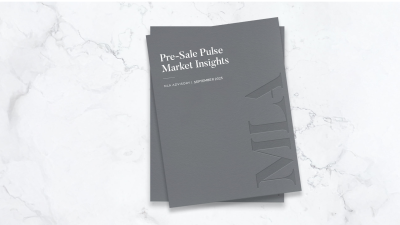Investors, owners, potential buyers, and real estate agents alike have been keeping both eyes on the shift in the Metro Vancouver market as of late. While the impact and future could be endlessly debated, anyone seeking to better understand the effects of market changes should turn their attention towards market cycles in general: what they are and how they work. Understanding the cycle can help owners recognize potential returns on their investments and help more accurately predict the future path the market will take.
WHAT IS A MARKET CYCLE?
In real estate, a typical market cycle is made up of four main phases: recovery, expansion, hyper supply, and recession. During recovery, growth remains stagnant with very limited new construction. During this phase, investors are keeping an eye out for any signs of advanced recovery. This is a great time to jump on below market value properties. In the expansion phase, the economy is improving. Growth is strong and demand has increased for space and housing. The public begins to regain confidence in the economy. During this time, it is advantageous to invest efforts into developing and/or redeveloping property (based on consumer needs) that will then sell at a higher value. The market enters hyper supply after developers and investors tried too fervently to increase supply to meet the demand in a growing market; the tipping point into hyper supply happens when supply exceeds demand. The recession phase means that supply has exceeded demand by a wide margin and owners are suffering from high vacancy rates. Not only is rent growth not happening, but some landlords are forced to offer reduced rental rates to entice renters also affected by the economic downtown. A rainy-day fund can make all the difference in this period, as this is not the time to sit back and feel sorry about the state of the economy. A recession offers the opportunity to purchase properties in distress at a deep discount.
Researchers and experts are eager to best define the path of the market cycle. Industry insiders will often mention the ‘seven-year cycle’ in real estate, while some research has concluded that the average real estate cycle span is more like 18 years. What is certain is that real estate is variable and evolving.
WHAT HAS CHANGED IN RECENT CYCLES?
One of the largest impacts on these established market patterns has been due to the speed with which information is reaching consumers. Today’s buyers are increasingly well-informed, with access to a large and diverse amount of information that allows them more sophistication in decision making. Because there is a near instantaneous distribution of information via mediums like social media, market sentiments and therefore activity can change at a faster rates based on headlines and chatter. The result of that shows in the numbers: in the form of an acceleration in both velocity and amplitude of the ups and downs. In many ways, the information explosion is both a blessing and a curse to the real estate industry. Homeowners and buyers can stay informed and make the best decisions for themselves. However, the gossip effect can lead to reactivity and result in over-pronounced enthusiasm or pessimism. When the landscape is shifting so rapidly, there is more pressure to make quick and reactive decisions out of fear. The unfortunate reality is that without time for deep consideration and understanding, unintended consequences can sneak in.
WHAT DOES A MARKET CYCLE LOOK LIKE TODAY?
With the continued increases in the speed of the market cycle, it’s no longer accurate to talk about 18-year or seven-year cycles. We are now in an era much closer to a three-year cycle as a result of the volume of information available and the rate of its dissemination. In today’s marketplace, geopolitics have become not only relevant to the conversation but extremely important. Overnight news now has an immediate impact. In the past, troubling economic news would occur overseas, and there would be time to contemplate its potential consequences and your chosen reaction to them. Now, reactions are immediate. One example of the increasing speed of market cycles can be seen in comparing the dot-com crash with the past six months. After the stock market bubble burst in the United States at the end of the 1990s, stock valuations dropped by over 40% over the course of three years. This year, the S&P 500 shrunk roughly 20% to its year low in May, more than half of the drop of the entire dot-com crash in only 5 short months.
With the speed of market changes moving at an increasingly brisk pace, it’s becoming easier to be caught up in ‘hype’ or to make snap, reactionary decisions as buyers and sellers try to avoid market ‘FOMO’. To combat this fear-based decision-making, it’s crucial to take in a fuller, more holistic view of the market. It is important to note that the bottom line is, the right product will always sell, regardless of the pace of market cycles


